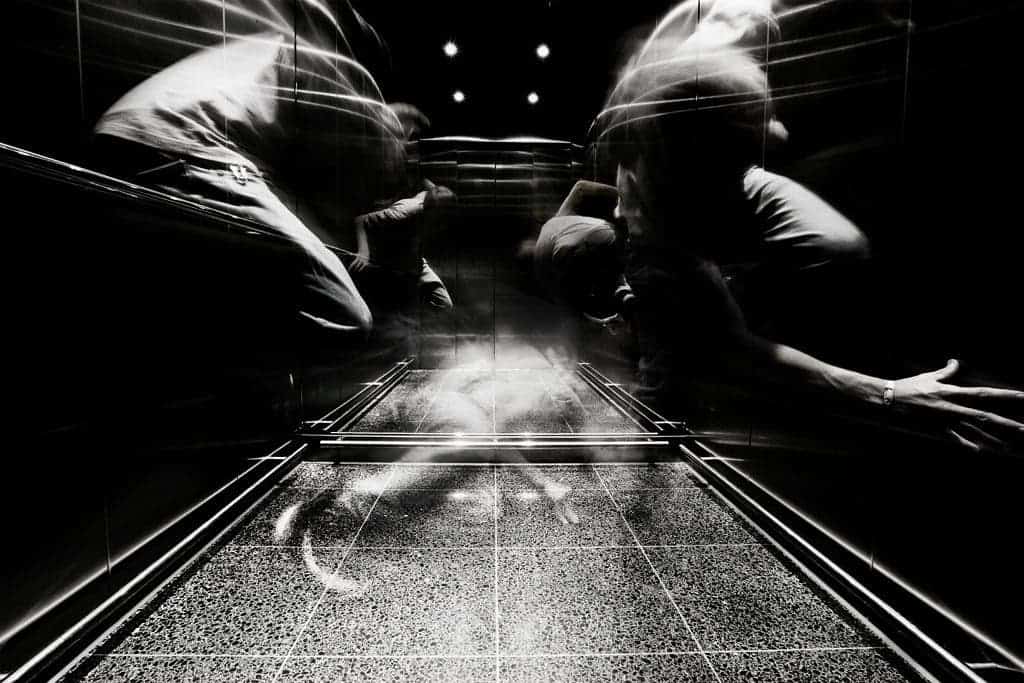
A fraction of the world’s population will always take the stairs. Some are fitness junkies, but most are claustrophobic — people who suffer from an irrational fear of small enclosures or spaces, a form of anxiety that gives the impression that they’ll be trapped forever.
Claustrophobia is derived from the root Latin words claustrom (“shut in place”) and phobos (“fear”). Though this condition has likely affected people since the dawn of humanity, the first mention of claustrophobia as a medical condition in scientific journals dates only from the 1870s, when two cases were reported in Paris following a period of rapid urbanization. Some of the most common claustrophobic environments are elevators, airplanes, tunnels, caves, closets, bathrooms, or basements.
Not all people suffering from claustrophobia will run away from elevators like it’s the plague, of course. Like most phobias, anxiety strikes in various degrees of intensity from person to person, depending on how powerful the triggers were. This trigger can be genetic, environmental, or, as often the case, a combination of the two.
Claustrophobia symptoms
A claustrophobic event is very similar to an anxiety attack. The key difference is that while an anxiety attack can be unpredictable, claustrophobia is always triggered by similar events. Some of the most common symptoms include:
- Visible physical reactions – the claustrophobic person will almost immediately react to small spaces, first by sweating. This is followed by visible shaking, trembling, and in some extreme cases nausea, which can cause some to faint.
- Inward physical reactions – those with less pronounced forms of claustrophobia will react a bit better, though the anxiety is visible. When entering a small space, they might feel lightheaded, dry-mouthed or get a slight numbness in the extremities.
- Psychological reactions – When claustrophobia hits bat crazy, the psychological responses can be quite hard: panic, dread, and even terror. Some feel like the room is literally closing in on them, which further exacerbates symptoms.
Claustrophobia causes
That’s as far as symptoms go, but what are the root causes of claustrophobia?
First and foremost, patients develop this phobia from conditioning — like getting stuck in an elevator or closet for prolonged periods of time or in multiple instances. This trauma triggers a fear of similar situations in the future, and while this conditioning often occurs in childhood, even adults can get this phobia later in their lives following a claustrophobic experience like a visit to an MRI machine.
There are also genetic factors that predispose some to claustrophobia more than others. One study suggests that people with panic disorders have a smaller amygdala than the average person. The amygdala is an almond-shaped set of neurons located deep in the brain’s medial temporal lobe whose role is to process emotions like the fight-or-flight response. This size difference, which is genetically driven, may interfere with how the brain processes fear and the perception of danger.
Other scientists believe we’re all primed for claustrophobia, being a survival instinct that’s intrinsically buried in our genetic code. One group of researchers thinks they’ve identified a single gene defect responsible for triggering the phobia of small spaces.
One 2011 study found claustrophobic individuals have an exaggerated sense of the near space surrounding them — an invisible bubble referred to as the “personal space”. People who project their personal space too far beyond their bodies, or the norm of arm’s reach, are more likely to experience claustrophobic fear, the researchers found.






